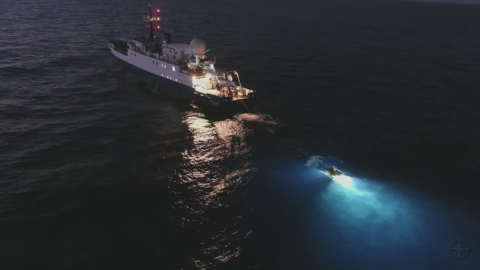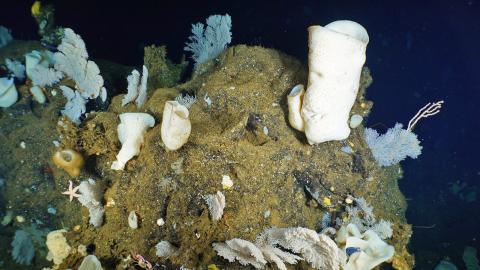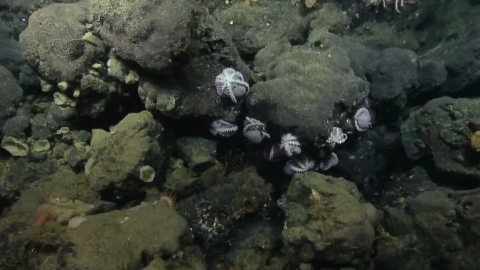Aboard E/V Nautilus Part II: Welcome to the Octocone
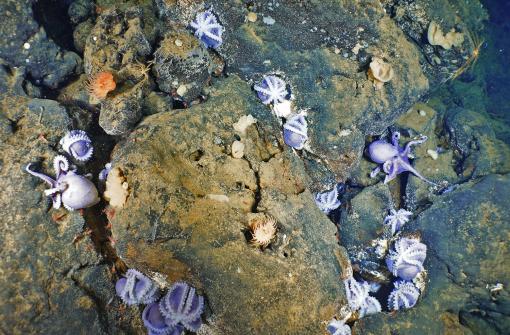
Guest blog by Marley Parker, Video Engineer
Originally posted by ML Parker Media
Davidson Seamount | 35.7167° N, 122.7167° W | October 9, 2020
In the control van, we’re talking about collective nouns for groups of animals. A murder of crows. A parade of elephants. A conspiracy of lemurs.
“Anyone know what a group of octopus is called?” I ask the room. A quick Google search yields mixed results. One list refers to a group of octopus as “a consortium”, while another result states they are solitary animals that live alone in an underwater den for their entire lives… you won't find them in a pack/herd/group in real life.
Tonight, we will prove that statement to be quite wrong.
It takes roughly two and a half hours for Argus and Hercules to sink down to a depth of 3,400 meters (a little over two miles). When the sea floor comes into view, our ROV pilot Jess Sandoval positions the manipulator arm of Hercules so I can white balance the main camera. Then we set off.
Today we are exploring a small volcanic cone near Davidson Seamount off the coast of Monterey Bay. Remnants of underwater volcanoes exist throughout the world’s oceans, but this particular one holds a special phenomenon.
“And here’s our first octopus!” says Chief Scientist Chad King, as a beautiful, eight-armed creature comes into view. “World Octopus Day was yesterday so we’re a day late…”
I zoom the camera on the octopus, watching its arms slowly expand in all directions. This is not the first time I’ve seen an octopus on the seafloor, but nevertheless, I am captivated.
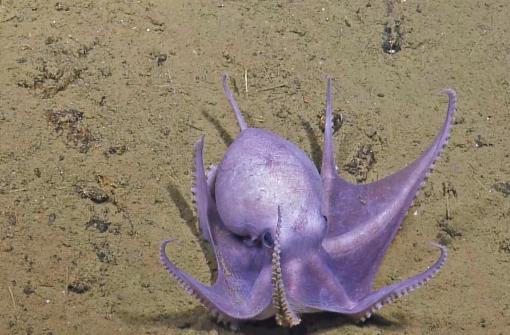
We gradually make our way up the cone, spotting more and more octopus as we go. I count a dozen within the first two or three minutes. Some are balled up, and some have their arms extended. Chad explains various defensive behaviors, and how to determine the sex of an octopus by looking at its third arm.
We observe two or three octopus in the background when a hatchling floats into the foreground, translucent and embryonic-looking. It still has a little sack attached to its tiny form, indicating it just hatched a few hours prior. This hatchling is evidence of the reason we’re here — to see (and attempt to better understand) why octopus come to this spot to lay their eggs.
Thirty minutes later, as we near the top of the cone, we encounter a cluster of at least a dozen octopus. I have counted over 60 of them since we reached the seafloor, but I stop counting now to focus on filming.
Almost all of the octopus appear to be upside down, with their arms wrapped backwards around their heads. For this particular genus, this inverted shape is characteristic of brooding behavior — i.e. mothers protecting their eggs.
Over the course of the dive, we will see hundreds and hundreds of octopus. When Chad carefully reviews this footage later, he will count well over 2,000 of them.
Muusoctopus robustus is a common species, but to find them in this massive number is not. After discovering the “octopus garden” in 2018 (another volcanic outcrop about six miles from here) Chad and the Nautilus team returned to this area a year ago and found this spot, which they aptly named the “octocone”.
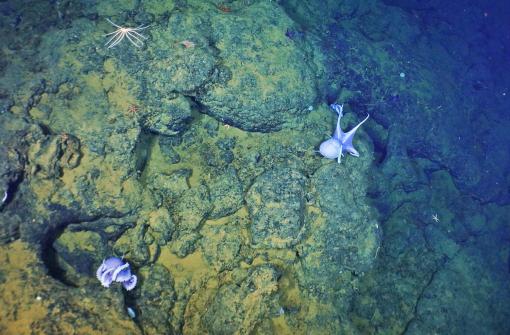
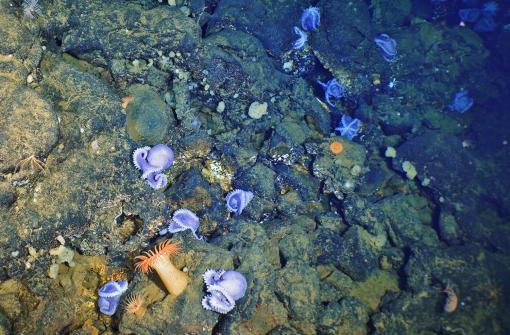
So why do the octopus gather here? What makes this spot so special?
Scientists believe it may have something to do with geophysics.
The whole area around Davidson Seamount is volcanic, or to put it in scientific terms: a low temperature ridge flank hydrothermal seep where water is warmed by pressure. According to Chad, the theory is seawater percolates through the seamount itself (because the rock is so porous) traveling through channels and conduits hundreds of meters below the seafloor. “So water gets pushed through these pressure gradients like toothpaste through a tube,” he says.
Chad isn’t a geophysicist (and neither am I) but conceptualizing how water flows under the sea floor triggers all kinds of questions. “Think about how the water is getting that much closer to the earth’s mantel,” Chad says. “If it’s pushed a hundred meters down into the rock—how warm does it get? Is it boiling?”
By the time water seeps out of the cracks, it is nowhere near that warm — but still much warmer than the surrounding near-freezing temperatures. Our temperature probe records between 7 to 9 degrees Celsius. Where the warm water meets the cold water creates a “shimmering” effect, similar to heat radiating off a blacktop parking lot on a hot summer day. A stronger shimmer indicates higher flow rates or greater temperature differential.
Yet these octopus survive (and thrive) in the deepest, coldest water in the ocean. So why do they seek out warmer waters to lay their eggs?
This is the main question driving Chad’s research (and curiosity) about this place. “Something in their evolution has coerced them to go to these warm spots, but why?”
He believes there may be many more locations along the California coast where octopus gather at warm water seeps. The challenge, however, is finding them.
“These seamounts are so deep, so complex, and so inaccessible,” Chad says. “In such a harsh environment, it’s going to take a lot of hard work and dedication to answer these questions.”
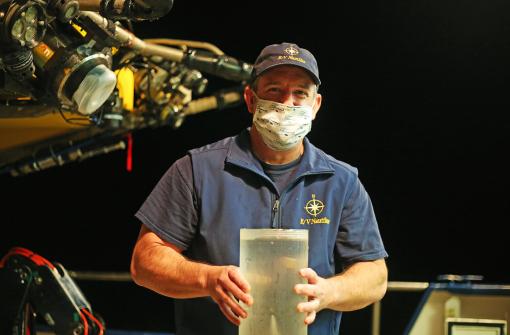
To see more from our expedition, check out NA122: Central California NMS. Visit Nautilus Live to view imagery of octopus nurseries, and learn more about Chad King’s work at the Monterey Bay National Sanctuary and SIMoN — Sanctuary Integrated Monitoring Network.
If you enjoyed this post, check out Aboard E/V Nautilus Part I and Part III.
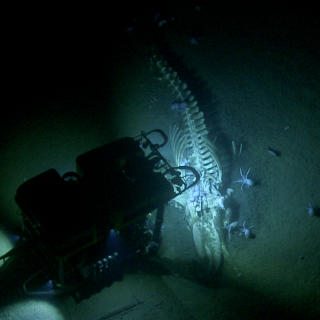
Central California NMS
This joint expedition will visit three distinct areas of Monterey Bay National Marine Sanctuary (MBNMS), a region comprising one of the world’s most productive and biologically rich ocean areas protecting over 700 species of fish and deep benthic species. Pioneer Canyon is in the northern portion of MBNMS, and is administered by Greater Farallones National Marine Sanctuary.
